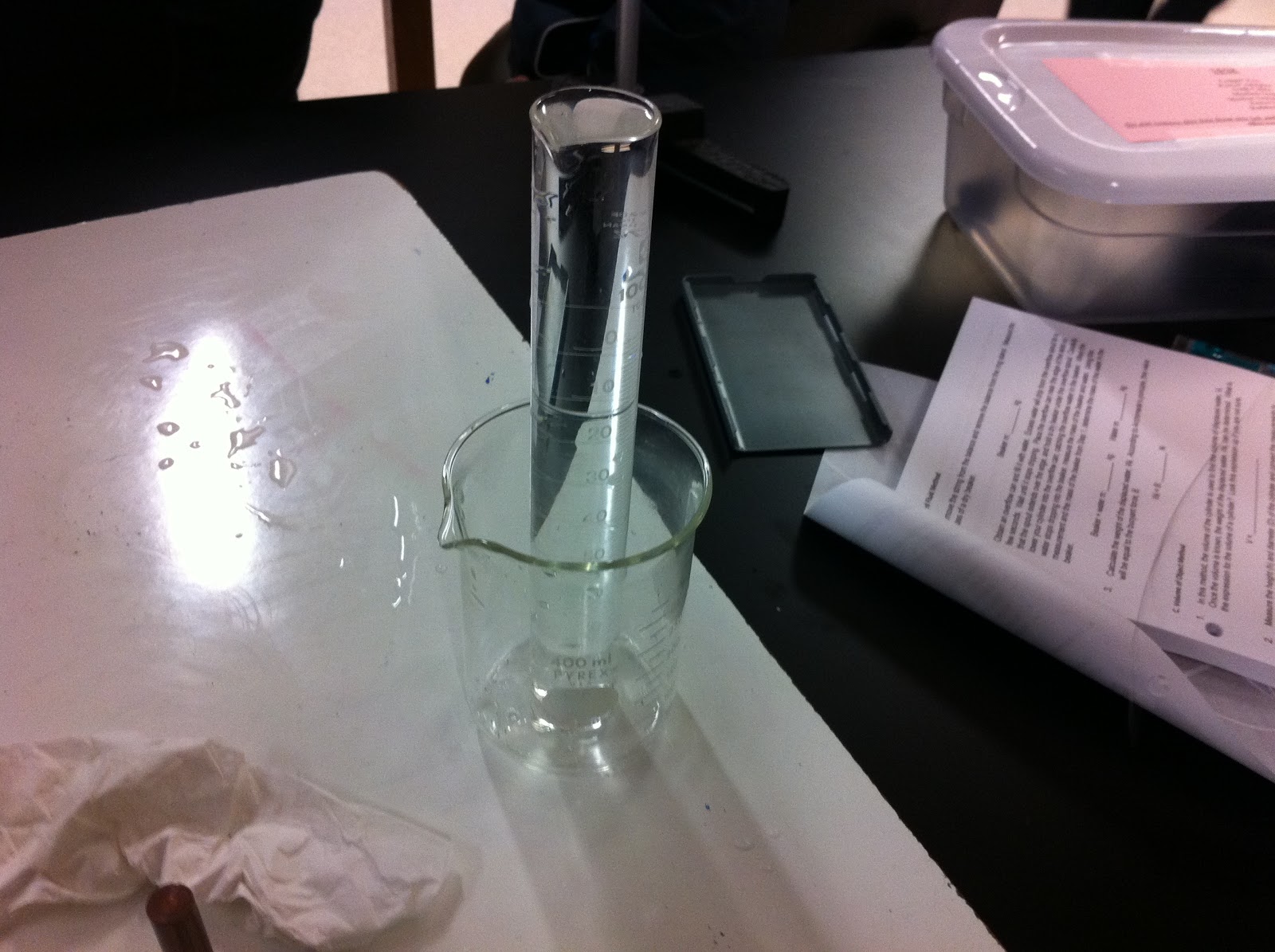Purpose
The purpose of this experiment was to measure the buoyant force acting on an object three different ways and compared the three measurements.
Part A. Underwater Weighing Method
The weight of the metal cylinder in air was measured to be 1.029N.
The weight of the metal cylinder completely submerged in water was 0.734N.
B= mg-T
mg =
1.029 ± 0.0005N
T = 0.734 ± 0.0005N
B = 0.295 ± 0.001N
Part B. Displaced Fluid Method



The mass of a dry beaker: 0.146±0.0005 kg.
The mass of beaker plus water overflow: 0.186±0.0005 kg.
The mass of water: 0.040±0.001 kg
Wf = B = 0.392±0.098N
Part C. Volume of Object Method
In this part, the volume of the metal cylinder was measured using caliper. The
data obtained was
shown as the following:
d = 0.025 ± 0.0005 m
V= 3.733*10^(-5)± 1.732*10^(-6) m^3
B = 0.366 ± 0.017 N
Questions
- The buoyant forces of the three method appear to be closed. Some possible erros might be that water was not completely transferred into the beaker in method 2, and there is some amount of water left over on the side and surface of the equipment. This is why methond 2 has the greatest uncertainty. However, the three forces are overall precise.
- The most precise method is the underwater weighting method because there are fewer errors since there are fewer measurement, and the only measurement of the force was measured by the computer. Also, it has the smallest uncertainty compared to the other methods, which is 0.001N. Displaced fluid water method has a lot of uncertainty due to the transfer of water such as spilling and residual water left on the surface of the equipment. Volume of method involved in a lot of measurements, which could cause in a greater error.
- If there is a normal force, then the reading on the force probe is smaller because now there is one more upward force in addition to the buoyant force. Therefore, the tension will be smaller. Then the boyant force is calculated using mg-T, causing a greater buoyant force.


No comments:
Post a Comment